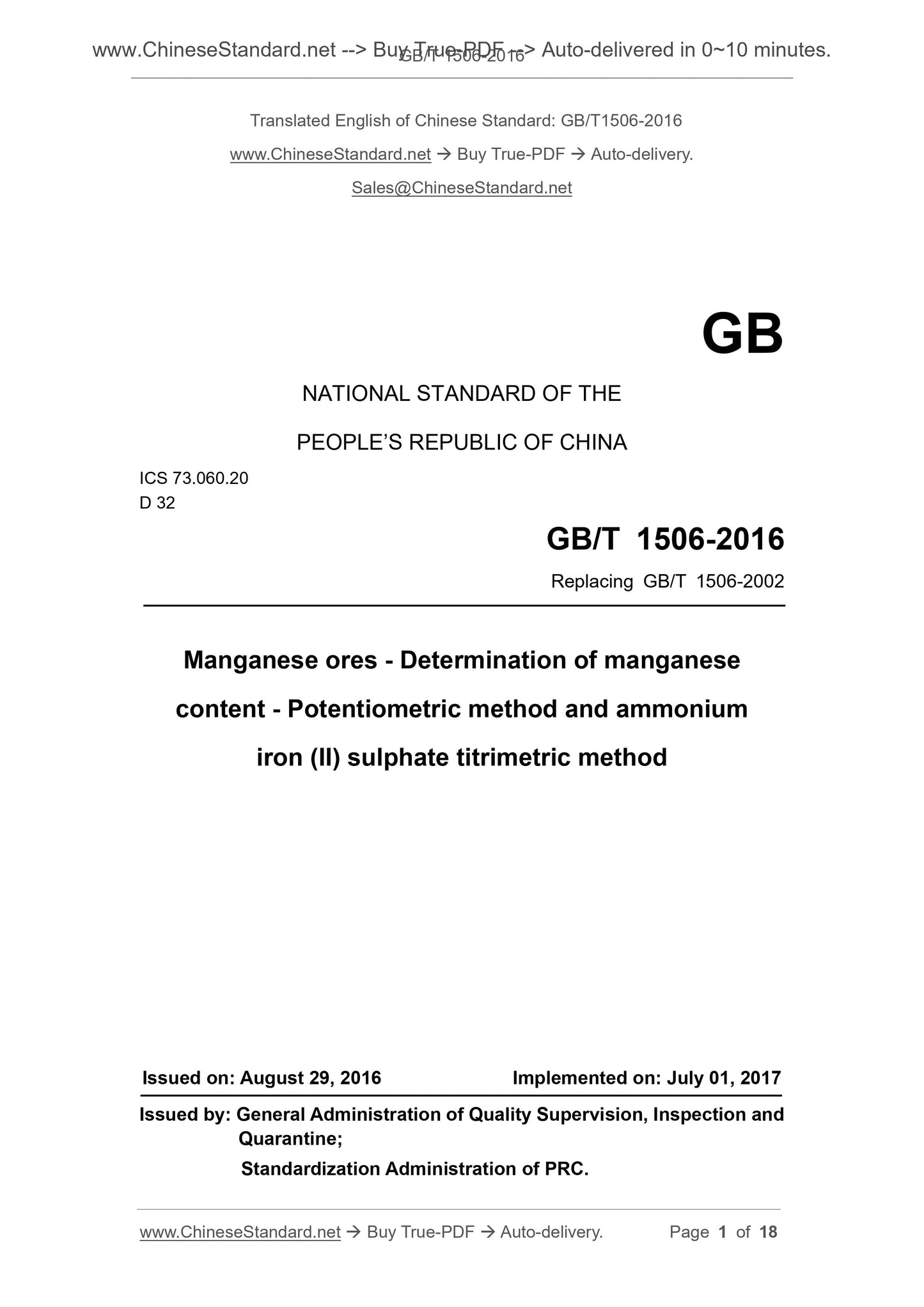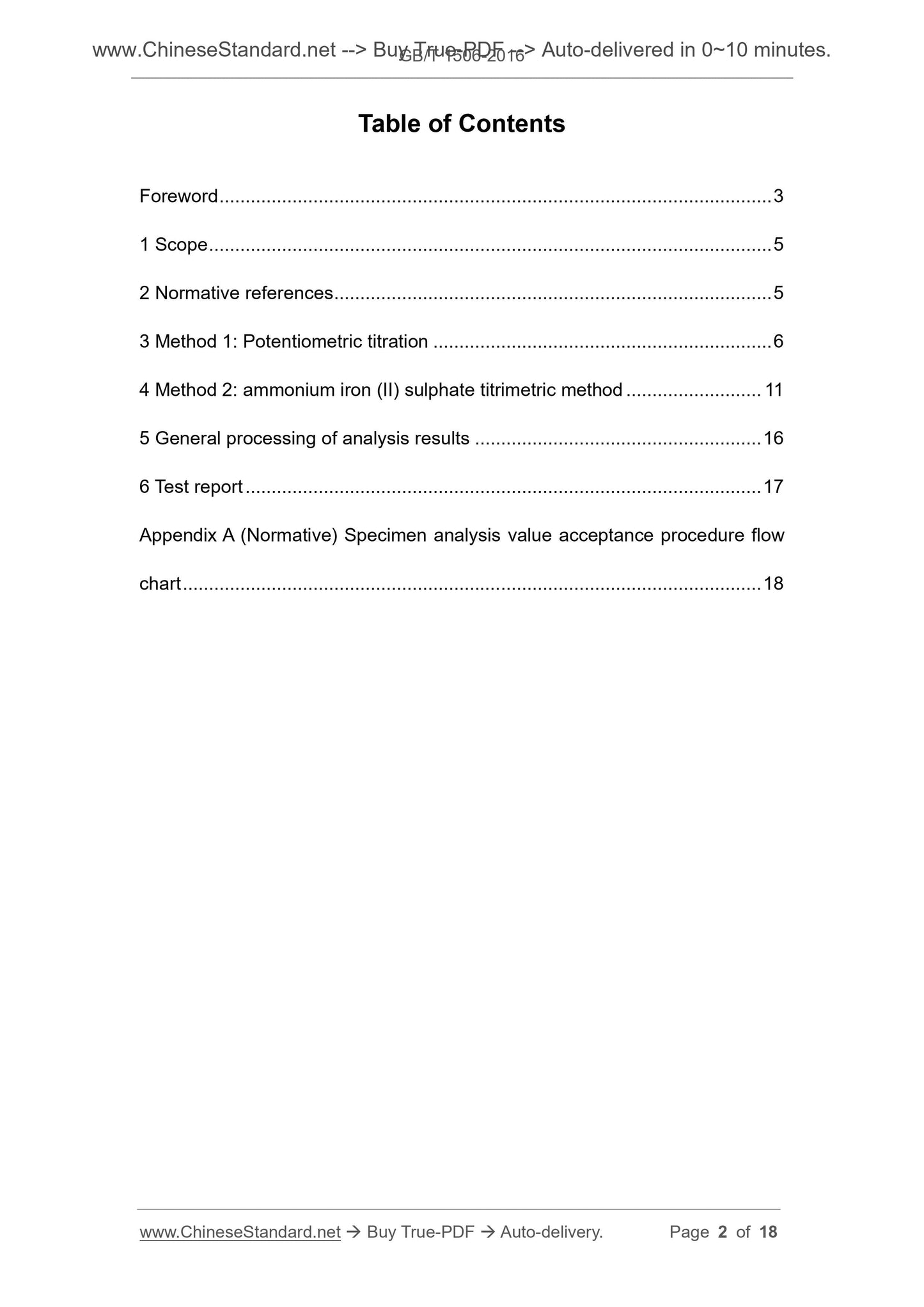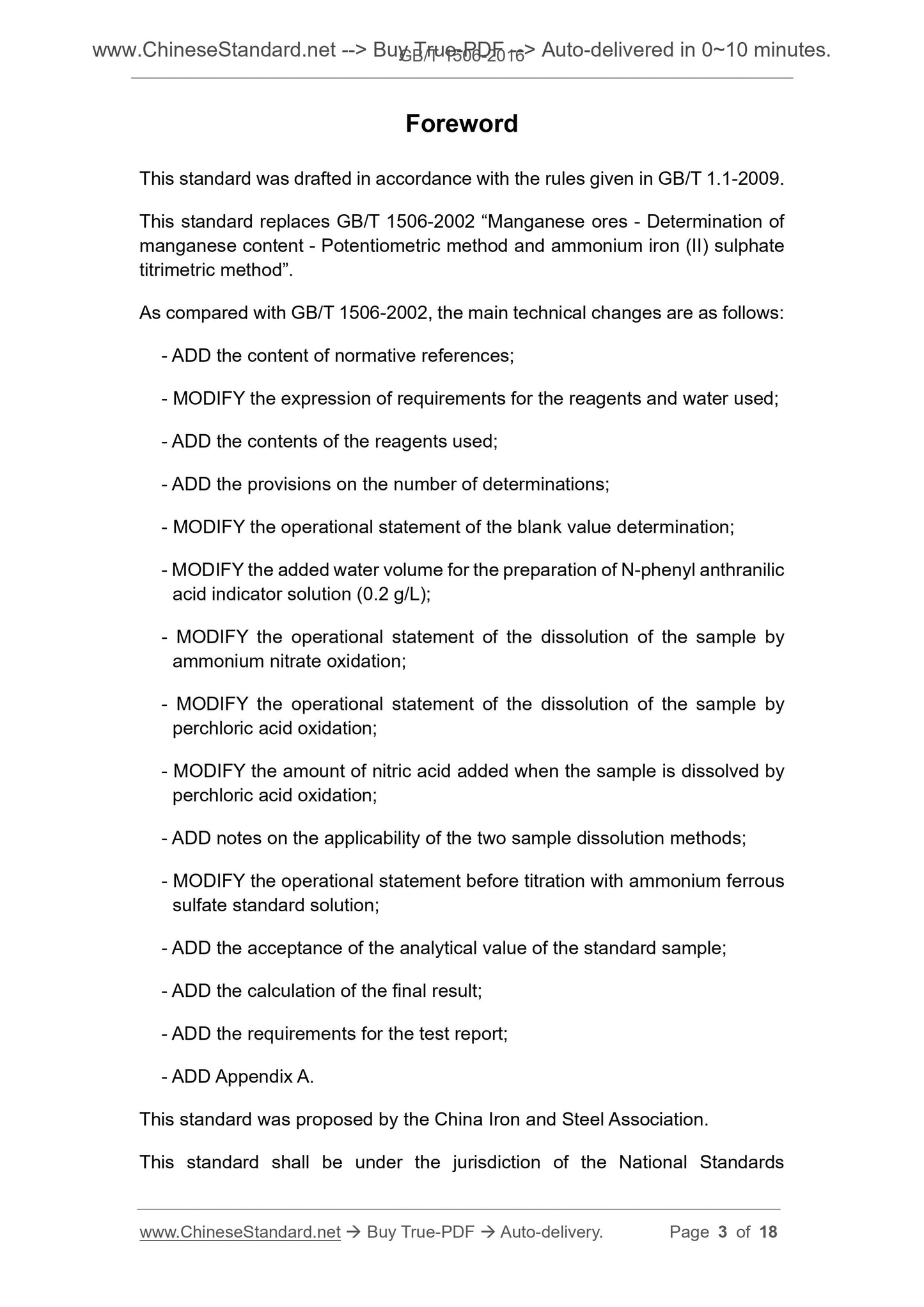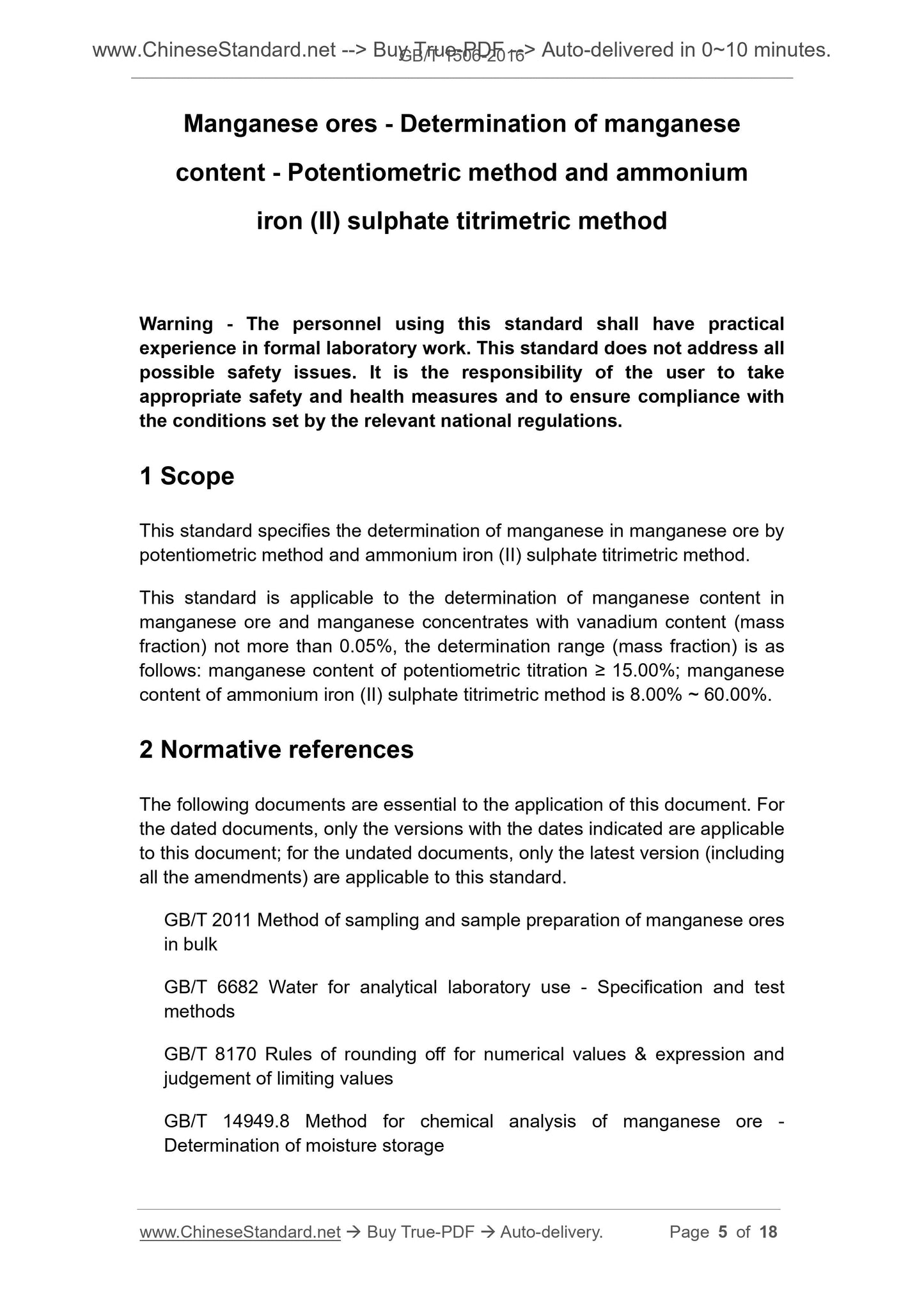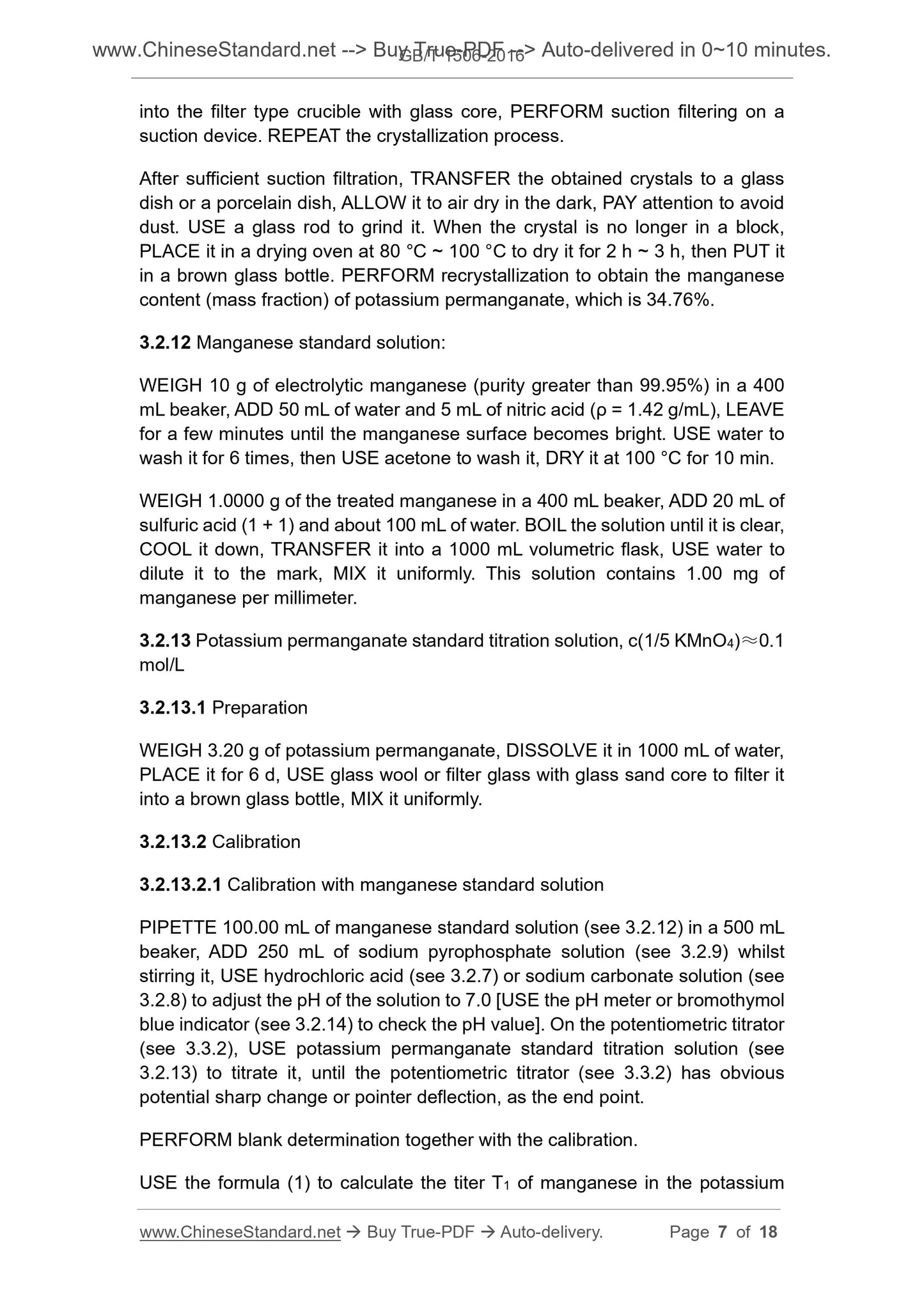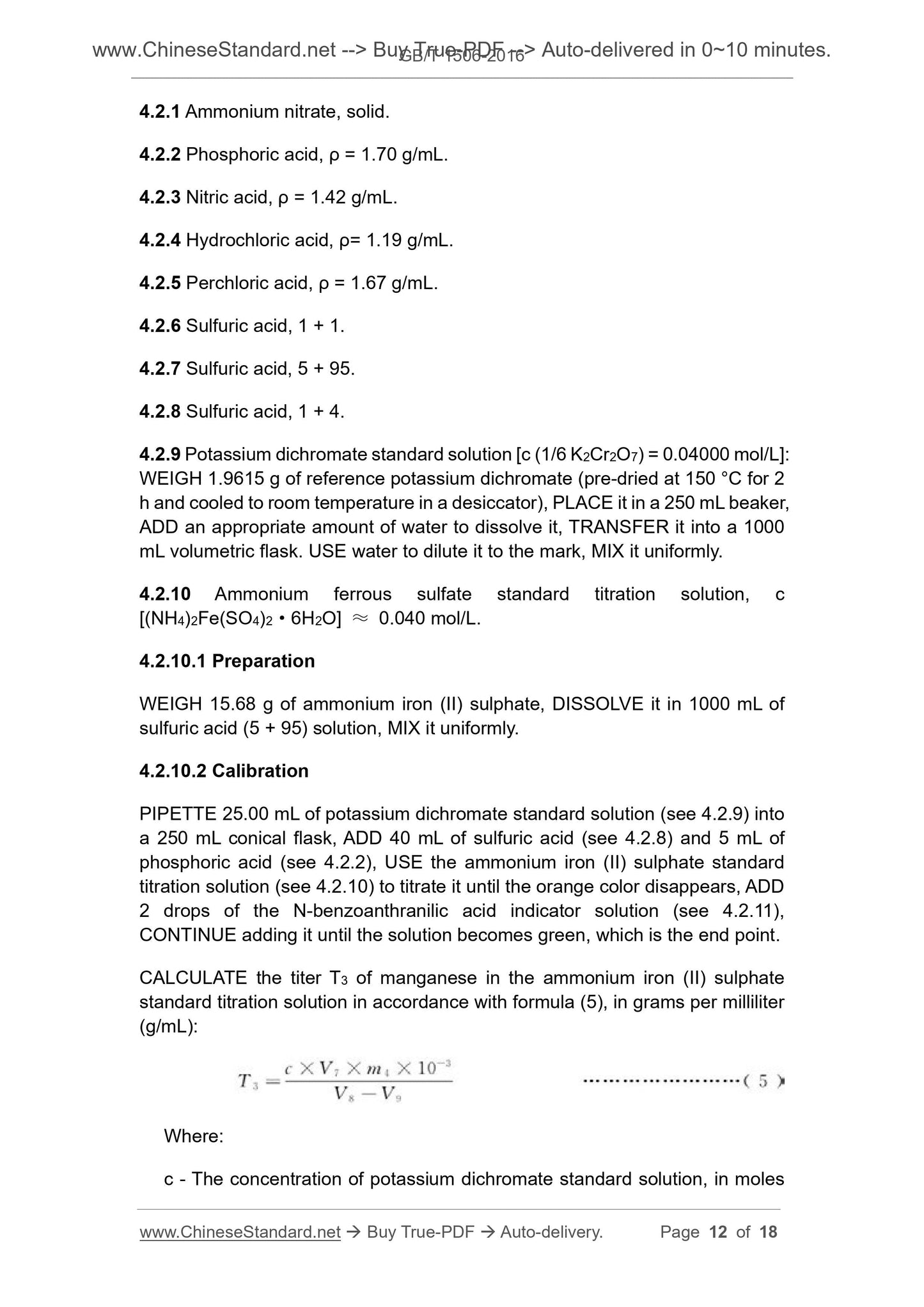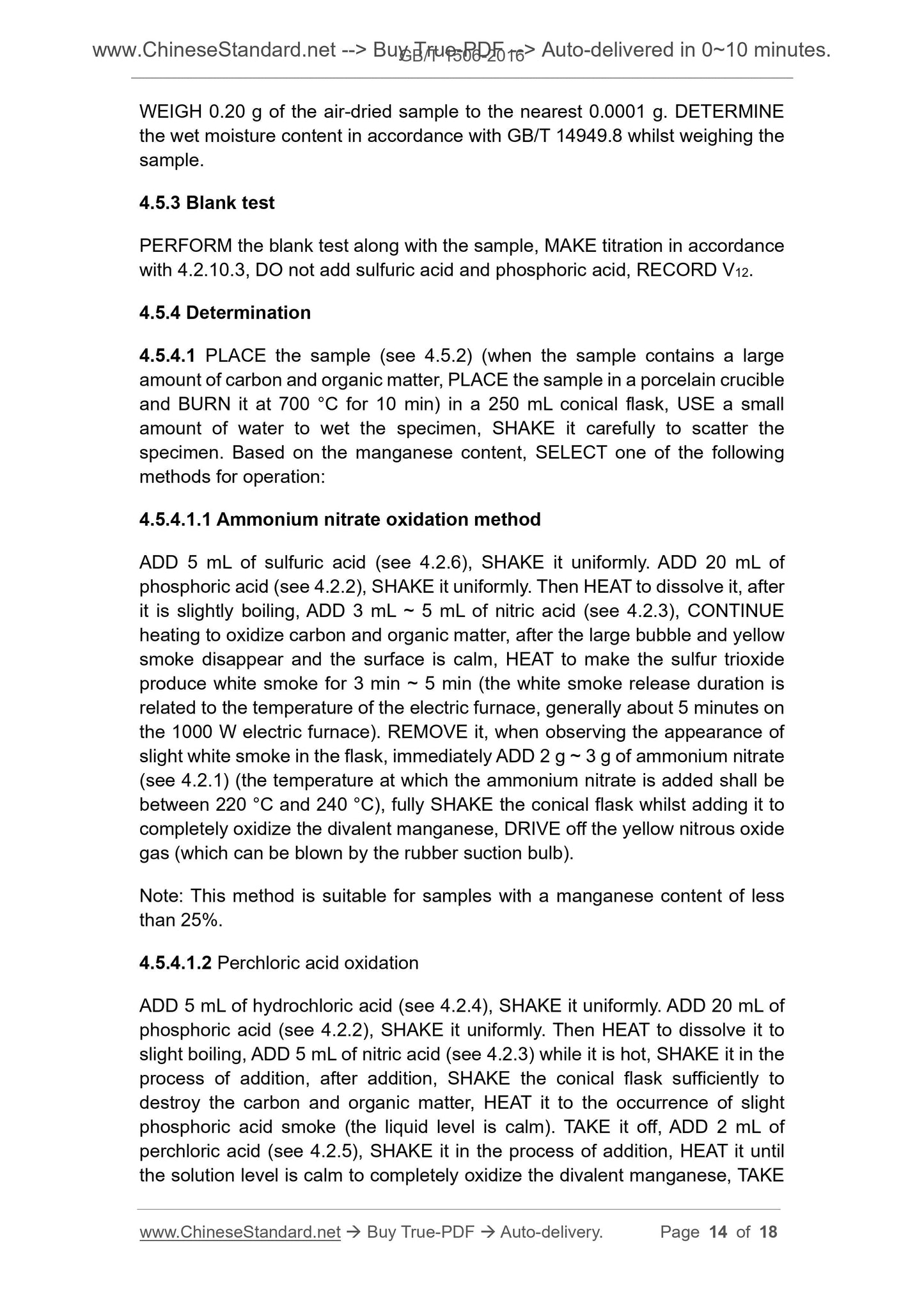1
/
of
7
www.ChineseStandard.us -- Field Test Asia Pte. Ltd.
GB/T 1506-2016 English PDF (GB/T1506-2016)
GB/T 1506-2016 English PDF (GB/T1506-2016)
Regular price
$150.00
Regular price
Sale price
$150.00
Unit price
/
per
Shipping calculated at checkout.
Couldn't load pickup availability
GB/T 1506-2016: Manganese ores - Determination of manganese content - Potentiometric method and ammonium iron (II) sulphate titrimetric method
Delivery: 9 seconds. Download (and Email) true-PDF + Invoice.Get Quotation: Click GB/T 1506-2016 (Self-service in 1-minute)
Newer / historical versions: GB/T 1506-2016
Preview True-PDF
Scope
This standard specifies the determination of manganese in manganese ore bypotentiometric method and ammonium iron (II) sulphate titrimetric method.
This standard is applicable to the determination of manganese content in
manganese ore and manganese concentrates with vanadium content (mass
fraction) not more than 0.05%, the determination range (mass fraction) is as
follows. manganese content of potentiometric titration ≥ 15.00%; manganese
content of ammonium iron (II) sulphate titrimetric method is 8.00% ~ 60.00%.
Basic Data
| Standard ID | GB/T 1506-2016 (GB/T1506-2016) |
| Description (Translated English) | Manganese ores - Determination of manganese content - Potentiometric method and ammonium iron (II) sulphate titrimetric method |
| Sector / Industry | National Standard (Recommended) |
| Classification of Chinese Standard | D32 |
| Classification of International Standard | 73.060.20 |
| Word Count Estimation | 14,156 |
| Date of Issue | 1979-02-28 |
| Date of Implementation | 2017-07-01 |
| Older Standard (superseded by this standard) | GB/T 1506-2002 |
| Regulation (derived from) | National Standard Announcement 2016 No.14 |
| Issuing agency(ies) | General Administration of Quality Supervision, Inspection and Quarantine of the People's Republic of China, Standardization Administration of the People's Republic of China |
Share
